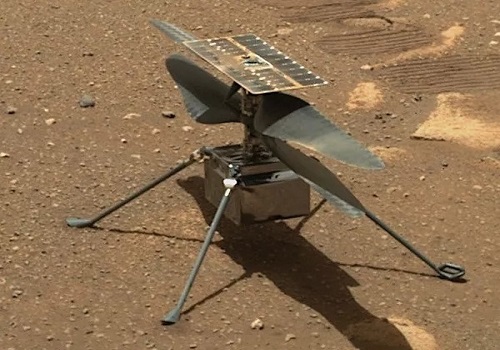Mars Ingenuity helicopter still going strong: Report

Follow us Now on Telegram ! Get daily 10 - 12 important updates on Business, Finance and Investment. Join our Telegram Channel
Even after 19 Red Planet flights under its belt in a year, NASA's Mars helicopter Ingenuity is not done yet.
The little chopper landed with NASA's Perseverance rover on the floor of Jezero Crater one year ago today (February 18).
Weighing just 1.8 kg, Ingenuity, in a matter of five pioneering flights last spring, proved that aerial exploration is possible on Mars despite the planet's thin atmosphere, Space.com reported.
It became the first rotorcraft ever to make powered flight beyond Earth.
"We're still going very strong," Jaakko Karras, Ingenuity deputy operations lead at NASA's Jet Propulsion Laboratory (JPL) in Southern California, told Space.com.
"There isn't a single item that we're getting nervous about," he added. "Everything is holding up very, very well."
Ingenuity's $85 million mission was supposed to be done after flight number five. But the solar-powered chopper had performed so well and remained so healthy that NASA granted a mission extension, the report said.
The rotorcraft has been pushing the limits of Red Planet flight during this new phase. For example, on sortie number 11, which it made on August 4, the helicopter covered 383 metres of ground, got 12 m above the red dirt and reached a maximum speed of about 19 kph.
It is also doing scouting work for Perseverance on these longer, more ambitious jaunts, helping the rover team plan routes and scope out potential science targets.
However, it was not always perfectly smooth sailing for Ingenuity. For example, the helicopter failed to transition to flight mode as planned in the leadup to its first-ever sortie, pushing that historic liftoff back by about a week, the report said.
Ingenuity's first attempt at flight number 14 was aborted after the chopper detected anomalies in two of its six flight-control servo motors. And a big Mars dust storm delayed flight 19 more than a month.
But, Ingenuity has powered through all of them to date, suggesting that the future is very bright for aerial exploration on Mars, the report said.
























